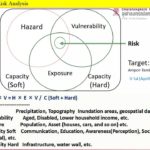I will update a column of the NIED e-mail magazine which I wrote a long time ago because the content is not faded with time. (I will do this step by step in Japanese and English.) I will also add comments to update the situation.
Published February 4, 2010
NIED-DIL e-mail magazine: Reported fatalities due to disasters
January 12 There was a big earthquake in Haiti. The consequences are still a major social issue, but at an early stage, the President declared that the number of casualties reached 200,000.
At the time of the Hurricane Katrina disaster at the end of August 2005, the first report was 10,000 casualties. But, in the end, there were about 1,300. I felt that nationality, culture, and so on became apparent compared to Japan.
A typical case in Japan is the Great Hanshin-Awaji Earthquake. I was living in Kyoto and worked in Kyoto City at that time. I remember that around 7 a.m., it was reported on TV that there were only a few deaths. As time went by, it increased to hundreds and thousands.
The U.S. tends to have a top-down and strategic approach; on the other hand, Japan seeks bottom-up and accurate process to disclose the number. In the 2004 Indian Ocean tsunami, reported death tolls in affected countries fluctuated, but taking this into account is a way to understand the disasters that reflect the country’s situations, including social backgrounds, cultures, economies, and so on.
Regarding Haiti, the number of reported deaths increases with time. I pray that the number will not be so huge.
P.S.
For example, the following World Vision website considers the current estimated death to be 250,000. In short, the first report ended up gaining some meaning.
https://www.worldvision.org/disaster-relief-news-stories/2010-haiti-earthquake-facts





